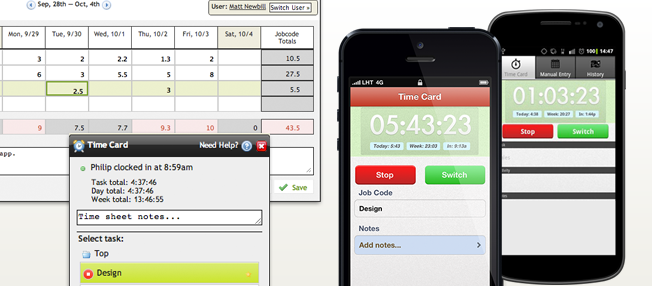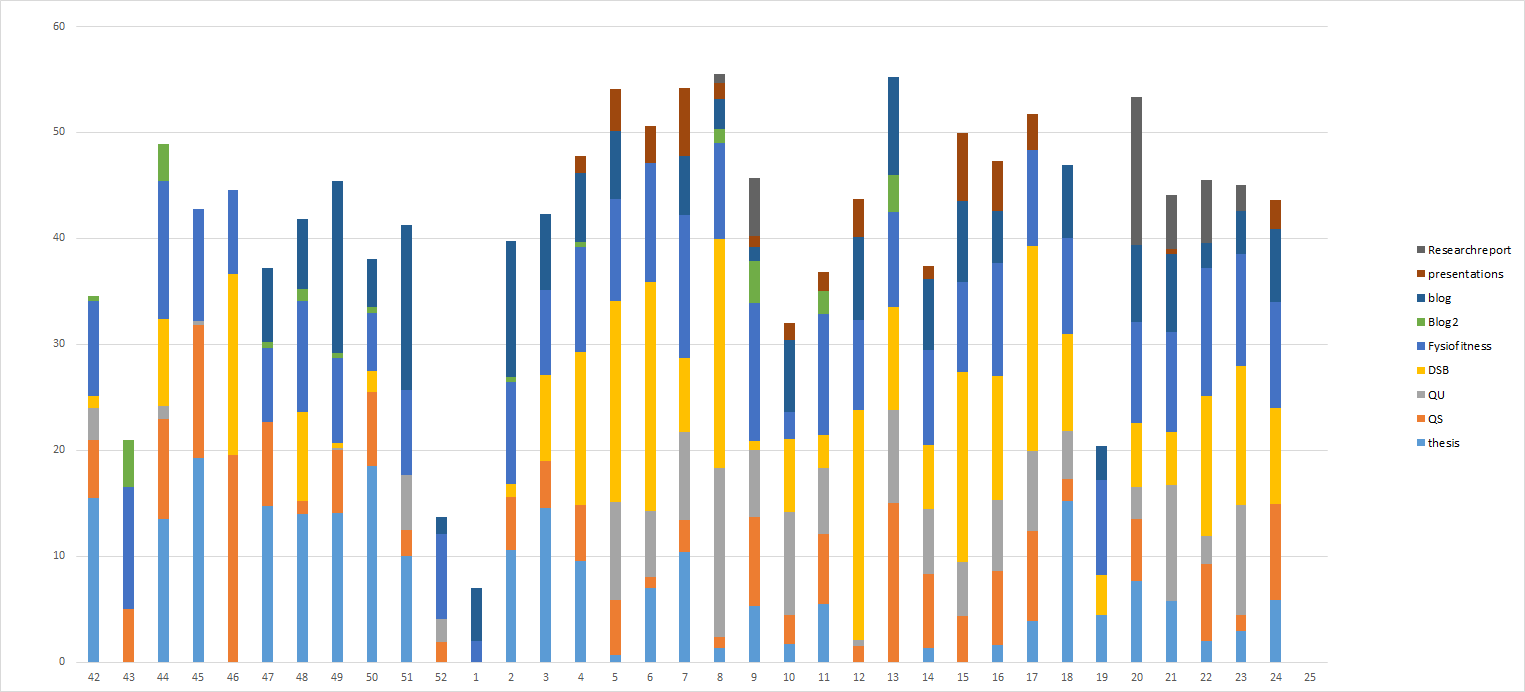I wanted to share my experiences with self quantification and applying the pomodoro technique. I don’t know if this is the correct forum for that, but I guess moderators can move the message somewhere if need be. This article is long, but I hope you bear with me.
Summary: start with measuring, stay concrete.
Measuring my productivity
I’ve had a problem with procrastination related to certain types of tasks. I’ve read a lot about procrastination and have tried to use several different techniques, but none of them have felt like a success yet. I don’t feel like I have a big problem with this, but it’s something that has been bothering me a bit.
The first step, however, was finding a way to measure my productivity, or lack thereof. I’ve never found a suitable tool for my platform (Linux desktop) and I didn’t even find a library to do this programmatically. I wanted to have an app that measured the time I’m in various programs, but never found one.
Finally, I stumbled into a simple command line utility that prints out the coordinates of the graphical display. Quite typical for Linux desktops, I have multiple workspaces which are like virtual monitors. I realized that I can designate the workspaces so that one is for zoning out (facebook, youtube etc), one is for meta-work (email, project related instant messaging) and rest for project work.
Once I had my own script running, I could pretty easily measure how my day spreads to different activities. Now, I could of course cheat myself, by zoning out on a workspace that is designated to work, but I’ve thus far never experienced such a problem. Nowadays, if I zone out, for whatever reason, I’ll do that on the corresponding workspace. Not a problem.
Just measuring the spread of my workday could potentially change my habits too, but in practice that did not happen. But once I had the measurement going, I knew that I could experiment with various techniques.
Prerequisites for trying out Pomodoro technique
This sort of lead me to Pomodoro technique. I had read about it previously and probably had thought about trying it, but never got around to actually start applying it in practice.
What made the difference this time was an important insight that I had earlier. It’s the idea that we are more likely to procrastinate on tasks that are abstract, distant. So, as an example, if I read about the Pomodoro technique, tried to understand it in a broader context and tried to think of its potential benefits and so on, I will be less likely to apply it. If, instead, I just concentrated on the concrete specifics of it, like how to actually do it, I might end up starting using it.
And this, indeed, was what I did. I knew the bare essentials of the technique: 25 minute period of uninterrupted work and 5 minute forced breaks. After 3-4 “pomodoros”, a longer break. And to have a real, concrete signal to end the periods. This was pretty much all I knew about the technique and this was all I wanted to know at this point.
The effect
With my crude measurement of workspace usage, I could clearly see a sudden improvement. Let’s say the baseline before the Pomodoro experiment was 1 unit. Immediately after it was like 2.5 units. The peak of the first few days dropped a little bit, but it flattened out to 2 units. (I’m using “unit” here, because I don’t want to break it down to what it actually means, but the relation is linear for my purposes. :-))
There was, of course, variance day to day, but after roughly 1.5 months, I was still twice as high as the baseline. At this point, I was safe to say to myself that even if the change was only due to the fact that I started a new habit, which I was measuring and constantly monitoring, it was still worth trying. The preceding month had been so much more effective for me. So far, the technique still works.
But what was way more important to me was that it changed the way it felt to start concentrating on the hard tasks. The quantification didn’t even really matter at that point as using the technique had made it easier for me to tackle difficult projects. I felt like I was in control now. Which is kind of ironic as my working day has been divided into these forced time slots.
The lesson
The first lesson was that quantification, measurement, really does make a difference. Of course, now it feels like I could have started applying the technique anyhow. But I do feel that having a measuring baseline was a necessary requirement for me try any technique at all. And it was encouraging to see a real, measured difference after starting using the Pomodoro technique.
Of course I “knew” all this intellectually before my own experiment. But knowing something intellectually, as I’ve come to learn, doesn’t make a slightest difference if never applied in practice. That’s why my recommendation is to start small, start concrete. I guess that’s what pretty much all self-quantifiers preach. Add another vote from me. It doesn’t matter how simple you start, just do something. This applies both to measuring and to applying techniques.
The other lesson is to concentrate on the concrete, the specifics. Don’t think about the potential benefits. Don’t try to understand the technique deeply, don’t read too much about it. All that will decrease the likelihood of you actually starting to use it.
Pomodoro is a nice technique in the sense that you don’t need to know but a one paragraph description to start using it. Yes, there is a free book about it, but you’re better off not reading. The book is well-written and useful, but only after you’ve already used the technique. If you’re already in the rhythm of using it, then go ahead and read the book and fine-tune it for your specific needs. But do not start by making theories about it. Just use it and see if it makes a difference.
(By the way, I’m not trying to say that Pomodoro is a cure-all technique for everyone. For all I know, I’m the only person who’s had success with it. It has worked for me so far. I guess I’m saying it’s worth trying if you’re tackling with the same problems.)

